-
 Bitcoin
Bitcoin $106,754.6083
1.33% -
 Ethereum
Ethereum $2,625.8249
3.80% -
 Tether USDt
Tether USDt $1.0001
-0.03% -
 XRP
XRP $2.1891
1.67% -
 BNB
BNB $654.5220
0.66% -
 Solana
Solana $156.9428
7.28% -
 USDC
USDC $0.9998
0.00% -
 Dogecoin
Dogecoin $0.1780
1.14% -
 TRON
TRON $0.2706
-0.16% -
 Cardano
Cardano $0.6470
2.77% -
 Hyperliquid
Hyperliquid $44.6467
10.24% -
 Sui
Sui $3.1128
3.86% -
 Bitcoin Cash
Bitcoin Cash $455.7646
3.00% -
 Chainlink
Chainlink $13.6858
4.08% -
 UNUS SED LEO
UNUS SED LEO $9.2682
0.21% -
 Avalanche
Avalanche $19.7433
3.79% -
 Stellar
Stellar $0.2616
1.64% -
 Toncoin
Toncoin $3.0222
2.19% -
 Shiba Inu
Shiba Inu $0.0...01220
1.49% -
 Hedera
Hedera $0.1580
2.75% -
 Litecoin
Litecoin $87.4964
2.29% -
 Polkadot
Polkadot $3.8958
3.05% -
 Ethena USDe
Ethena USDe $1.0000
-0.04% -
 Monero
Monero $317.2263
0.26% -
 Bitget Token
Bitget Token $4.5985
1.68% -
 Dai
Dai $0.9999
0.00% -
 Pepe
Pepe $0.0...01140
2.44% -
 Uniswap
Uniswap $7.6065
5.29% -
 Pi
Pi $0.6042
-2.00% -
 Aave
Aave $289.6343
6.02%
Is it a test of the main force to rush up and fall after the intraday chart with large volume in the early trading?
A sudden surge in volume followed by a sharp price rise and drop in early trading often signals institutional testing, creating traps for retail traders.
Jun 19, 2025 at 04:36 am
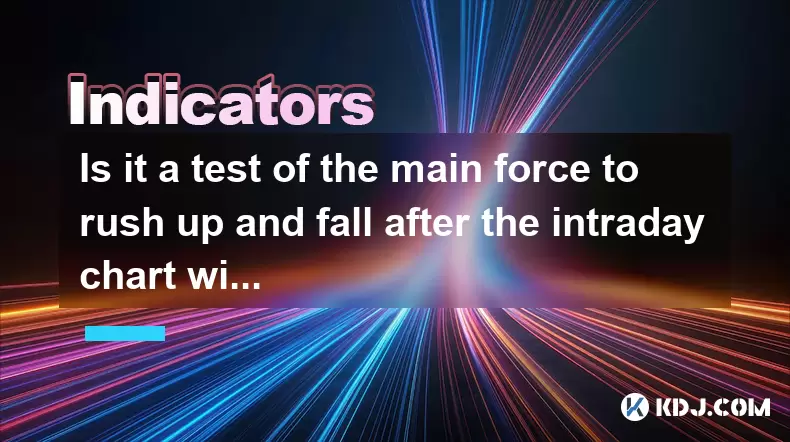
Understanding the Phenomenon of Large Volume and Price Action in Early Trading
When traders observe an intraday chart with a sudden surge in volume followed by a sharp price increase and then a rapid decline, many speculate whether this is a test by major market players—often referred to as the "main force." The idea stems from the belief that institutional investors or large entities manipulate early trading sessions to gauge market sentiment, liquidity, and retail participation.
In such scenarios, a sudden spike in volume typically signals aggressive buying, which may be executed by algorithms or high-frequency traders. However, when the price subsequently falls back to its original level or lower, it raises questions about the intent behind the move. Is this a trap for retail buyers? Or is it a genuine attempt to establish a new trend that failed due to lack of follow-through?
How Institutional Players Influence Short-Term Price Movements
Large financial institutions often operate under different timeframes and strategies compared to retail traders. One common technique attributed to them is the use of "wash trades" or synthetic volume, where orders are placed and canceled rapidly to create misleading signals on the chart. This can result in a false breakout or fakeout, especially during the early trading hours when market depth might not be fully established.
Another interpretation is that these moves are part of order flow testing. In this scenario, big players place large buy orders to see how much resistance they face from sellers. If the price rises quickly but collapses just as fast, it could indicate that there was no real demand beyond the initial push. This helps them determine whether the asset is worth accumulating or shorting at current levels.
Technical Indicators That Help Analyze Such Patterns
To better understand if a large-volume rush-up followed by a drop is a test or random noise, technical indicators play a crucial role. Traders often look at:
- Volume Profile: Identifies key price levels where most trading activity occurred.
- Order Book Imbalance: Reveals whether buy or sell pressure dominates at specific price points.
- Depth of Market (DOM): Shows real-time bid and ask sizes, helping detect hidden orders.
A sudden volume spike without a corresponding shift in the order book could suggest artificial manipulation rather than organic price discovery. When analyzing such events, it’s important to cross-reference the intraday chart with DOM data to confirm whether the volume came from actual transactions or merely from order placements and cancellations.
Practical Steps to Identify Whether It's a Main Force Test
If you're trying to assess whether the early price action is a main force test, consider the following steps:
- Observe the Timeframe: Focus on the first 15–30 minutes of trading in highly liquid assets like Bitcoin or Ethereum.
- Compare Volume with Previous Sessions: A sudden jump in volume that doesn't match recent averages is suspicious.
- Check for Rejection Candles: Look for long wicks or engulfing patterns that show rejection after a quick rally.
- Monitor Order Flow: Use tools like Depth of Market or footprints to analyze real-time trade imbalances.
- Avoid Immediate Entry: Wait for confirmation through sustained price movement or retests before taking positions.
By applying these filters, traders can distinguish between legitimate momentum and manufactured volatility designed to mislead smaller participants.
Psychological Impact on Retail Traders During These Events
The psychological effect of seeing a strong upward move only to witness it vanish can be damaging to inexperienced traders. Many chase the rally, thinking it's the start of a bullish trend, only to get caught in a reversal. This creates emotional stress and often leads to poor decision-making, such as panic selling or doubling down on losing positions.
From a behavioral finance perspective, these patterns exploit the herd mentality of retail investors. When prices shoot up, fear of missing out (FOMO) kicks in, prompting late entries. As the price drops, panic sets in, reinforcing the cycle of impulsive trading. Recognizing this pattern helps traders develop discipline and avoid falling into traps set by more experienced market participants.
Tools and Platforms That Aid in Detecting Manipulative Moves
Several advanced tools and platforms offer deeper insights into market structure and potential manipulation:
- TradingView: Allows users to overlay volume and price together for visual analysis.
- Glassnode Studio: Offers blockchain analytics that reveal whale movements in crypto markets.
- BitMEX Trade Map: Visualizes trade sizes and directions over time.
- Footprint Charts: Available on platforms like Jigsaw Trading, these charts show where buys and sells occur at each price level.
- Time & Sales Data: Displays every transaction in real-time, including order size and aggressiveness.
Using these tools enables traders to verify whether a sudden price move corresponds with real liquidity or is simply a facade created by large players to trigger stop-losses or attract buyers.
Frequently Asked Questions
Q: How do I differentiate between real volume and fake volume on a chart?
Real volume reflects actual executed trades, while fake volume often comes from wash trading or spoofing. You can check this by comparing the chart volume with depth-of-market data and time-and-sales logs. Real volume will show consistent bid/ask absorption, whereas fake volume may display erratic spikes without real trade execution.
Q: Can I profit from recognizing main force tests in crypto markets?
Yes, by identifying these patterns early, traders can position themselves ahead of potential breakouts or reversals. However, it requires patience, proper risk management, and confirmation through multiple data sources before entering a trade.
Q: Are certain cryptocurrencies more prone to manipulation than others?
Generally, low-cap altcoins are more vulnerable due to thinner order books and lower liquidity. Major coins like Bitcoin and Ethereum are harder to manipulate consistently, though short-term distortions still occur, especially during low-liquidity periods.
Q: Should I always avoid trading during volatile early sessions?
Not necessarily. Volatile sessions can present opportunities if approached with caution. Using limit orders instead of market orders and confirming price action with order flow data can help mitigate risks associated with early trading moves.
Disclaimer:info@kdj.com
The information provided is not trading advice. kdj.com does not assume any responsibility for any investments made based on the information provided in this article. Cryptocurrencies are highly volatile and it is highly recommended that you invest with caution after thorough research!
If you believe that the content used on this website infringes your copyright, please contact us immediately (info@kdj.com) and we will delete it promptly.
- BAY Miner & XY Miners: Unlock Daily Earnings with BTC, DOGE, and LTC Cloud Mining
- 2025-06-20 10:25:12
- Decoding the Aaluxx Myth: Maya Protocol and the Smart Economy
- 2025-06-20 10:30:12
- Binance Wallet, Exclusive Token, Launch: What You Need to Know
- 2025-06-20 10:45:12
- CryptoQuant, Bitcoin, and Market Drops: Decoding the Signals
- 2025-06-20 11:05:12
- Bitcoin, Emerging Risk, and Treasury Companies: A New York Perspective
- 2025-06-20 11:05:12
- Semler Scientific's Bitcoin Bet: Bold Move or Risky Gamble?
- 2025-06-20 10:50:12
Related knowledge
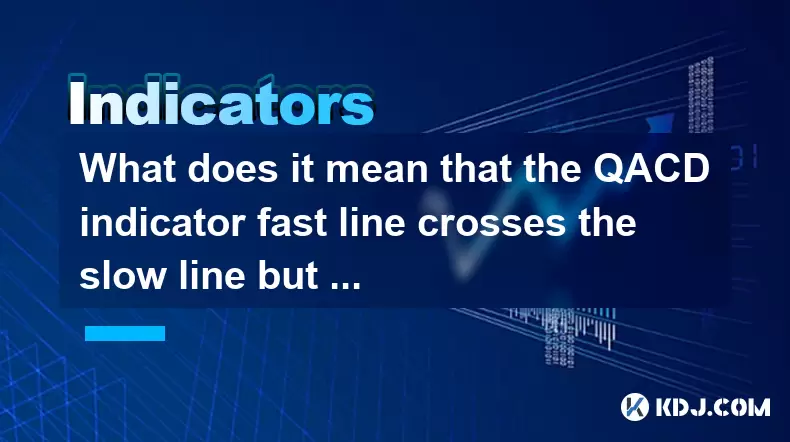
What does it mean that the QACD indicator fast line crosses the slow line but does not increase in volume?
Jun 20,2025 at 12:22pm
Understanding the QACD Indicator and Its ComponentsThe QACD (Quantitative Accumulation Convergence Divergence) indicator is a technical analysis tool used by traders to identify potential trend reversals, momentum shifts, and entry or exit points in cryptocurrency markets. It consists of two primary lines: the fast line, which reacts more quickly to pri...
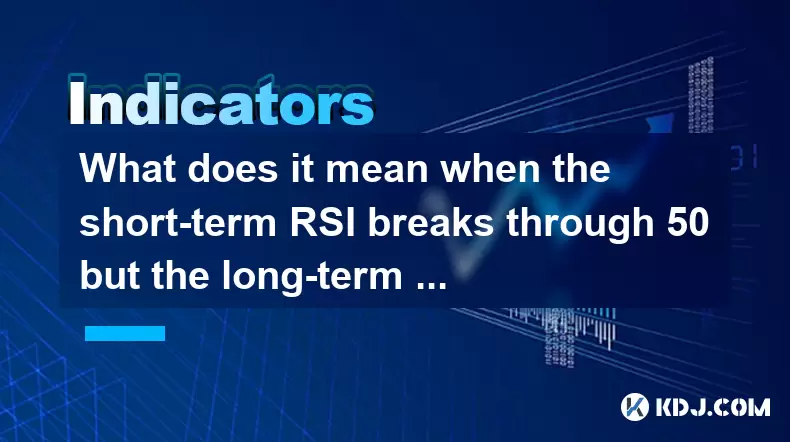
What does it mean when the short-term RSI breaks through 50 but the long-term RSI does not move in the RSI indicator?
Jun 20,2025 at 10:42am
Understanding the RSI Indicator and Its Dual-Term ApplicationThe Relative Strength Index (RSI) is a widely used momentum oscillator in technical analysis, primarily for identifying overbought or oversold conditions in an asset’s price movement. It typically operates on a scale from 0 to 100, with levels above 70 considered overbought and below 30 consid...
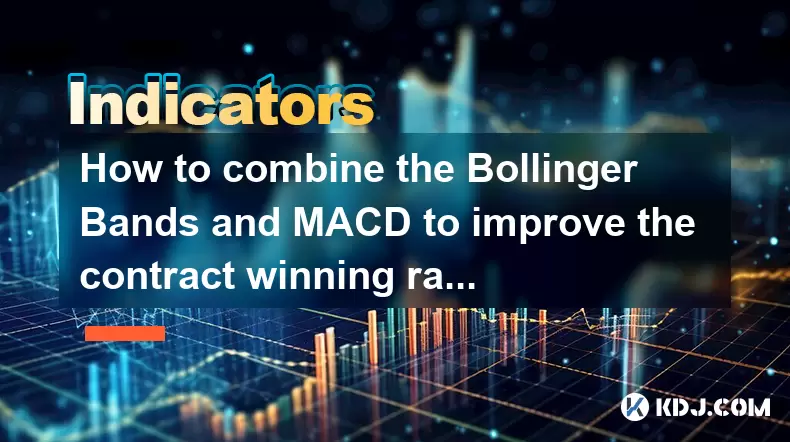
How to combine the Bollinger Bands and MACD to improve the contract winning rate?
Jun 19,2025 at 06:35pm
Understanding Bollinger Bands and MACD IndicatorsTo effectively combine Bollinger Bands and the MACD (Moving Average Convergence Divergence), it's essential to first understand what each indicator represents. Bollinger Bands consist of a middle moving average line and two outer bands that adjust based on market volatility. When prices move toward the up...
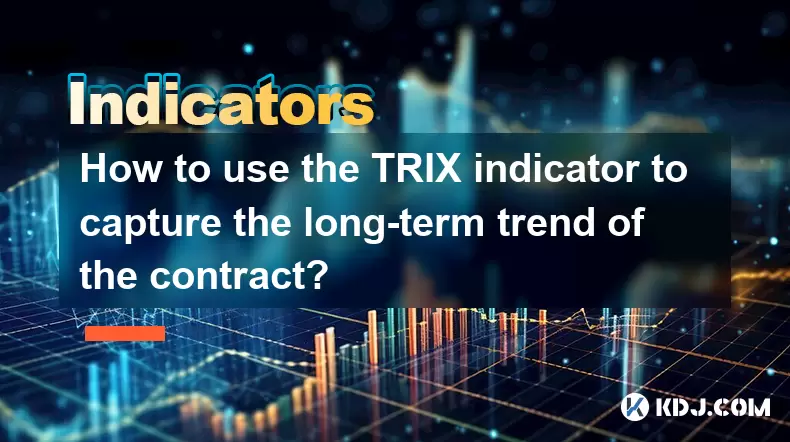
How to use the TRIX indicator to capture the long-term trend of the contract?
Jun 20,2025 at 09:14am
What Is the TRIX Indicator?The TRIX (Triple Exponential Average) indicator is a momentum oscillator used to identify oversold and overbought conditions, as well as potential trend reversals in financial markets. It is calculated by applying a triple exponential moving average to price data and then taking the percentage rate of change of that smoothed v...

How does the long lower shadow of the K line indicate the formation of the bottom of the contract?
Jun 19,2025 at 05:00am
Understanding the Long Lower Shadow in K-Line AnalysisIn cryptocurrency trading, K-line analysis plays a pivotal role in determining market sentiment and potential price reversals. A long lower shadow, also known as a long wick, is one of the most telling candlestick patterns that traders look for when assessing whether a bottom might be forming in a co...
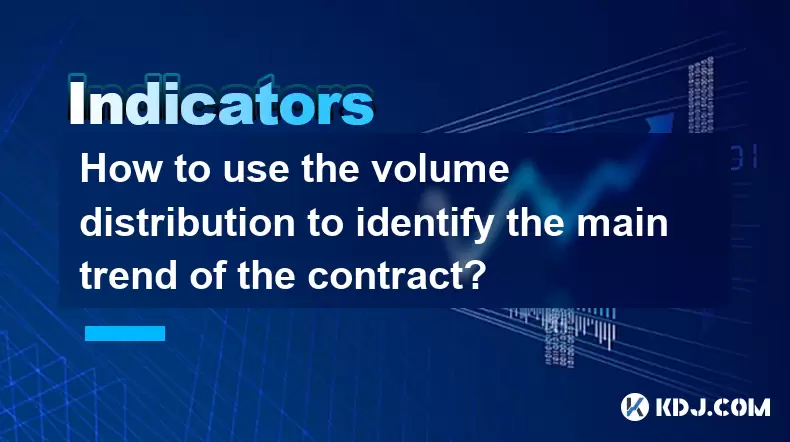
How to use the volume distribution to identify the main trend of the contract?
Jun 20,2025 at 03:56am
Understanding Volume Distribution in Cryptocurrency ContractsIn the realm of cryptocurrency trading, particularly within futures and perpetual contracts, volume distribution plays a pivotal role in deciphering market sentiment. Unlike spot markets, contract trading involves leveraged positions that can amplify both gains and losses. To navigate this com...

What does it mean that the QACD indicator fast line crosses the slow line but does not increase in volume?
Jun 20,2025 at 12:22pm
Understanding the QACD Indicator and Its ComponentsThe QACD (Quantitative Accumulation Convergence Divergence) indicator is a technical analysis tool used by traders to identify potential trend reversals, momentum shifts, and entry or exit points in cryptocurrency markets. It consists of two primary lines: the fast line, which reacts more quickly to pri...

What does it mean when the short-term RSI breaks through 50 but the long-term RSI does not move in the RSI indicator?
Jun 20,2025 at 10:42am
Understanding the RSI Indicator and Its Dual-Term ApplicationThe Relative Strength Index (RSI) is a widely used momentum oscillator in technical analysis, primarily for identifying overbought or oversold conditions in an asset’s price movement. It typically operates on a scale from 0 to 100, with levels above 70 considered overbought and below 30 consid...

How to combine the Bollinger Bands and MACD to improve the contract winning rate?
Jun 19,2025 at 06:35pm
Understanding Bollinger Bands and MACD IndicatorsTo effectively combine Bollinger Bands and the MACD (Moving Average Convergence Divergence), it's essential to first understand what each indicator represents. Bollinger Bands consist of a middle moving average line and two outer bands that adjust based on market volatility. When prices move toward the up...

How to use the TRIX indicator to capture the long-term trend of the contract?
Jun 20,2025 at 09:14am
What Is the TRIX Indicator?The TRIX (Triple Exponential Average) indicator is a momentum oscillator used to identify oversold and overbought conditions, as well as potential trend reversals in financial markets. It is calculated by applying a triple exponential moving average to price data and then taking the percentage rate of change of that smoothed v...

How does the long lower shadow of the K line indicate the formation of the bottom of the contract?
Jun 19,2025 at 05:00am
Understanding the Long Lower Shadow in K-Line AnalysisIn cryptocurrency trading, K-line analysis plays a pivotal role in determining market sentiment and potential price reversals. A long lower shadow, also known as a long wick, is one of the most telling candlestick patterns that traders look for when assessing whether a bottom might be forming in a co...

How to use the volume distribution to identify the main trend of the contract?
Jun 20,2025 at 03:56am
Understanding Volume Distribution in Cryptocurrency ContractsIn the realm of cryptocurrency trading, particularly within futures and perpetual contracts, volume distribution plays a pivotal role in deciphering market sentiment. Unlike spot markets, contract trading involves leveraged positions that can amplify both gains and losses. To navigate this com...
See all articles

























































































